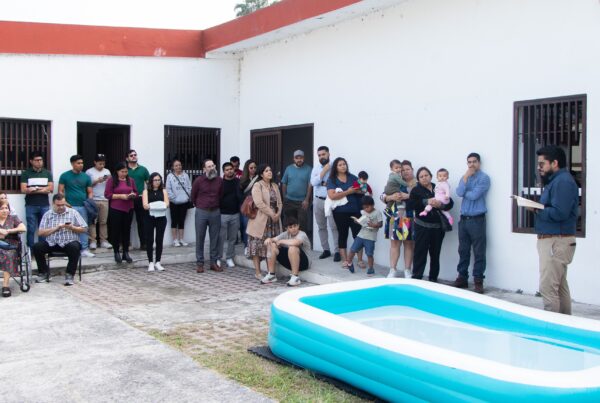Not everyone gets to have a “Paul.” But here’s what I know is 100 percent true—you can be a “Paul” for someone. It’s our sacred duty to pass on the faith, to train and equip the next battalion in the advance of the kingdom of God to the ends of the earth, the next town, and that new suburban development.
Discipleship Is Taught and Caught
I’m sure you know the classic discipleship passage, “And what you have heard from me in the presence of many witnesses entrust to faithful men, who will be able to teach others also” (2 Tim. 2:2). And this is when you’d expect me to give the breakdown of generations of discipleship. I’m not going to do that today. I want us to consider something else.
Ministry, discipleship, and leadership development happens by what is taught and by what is caught. Click Para TwittearIt’s been said that ministry, discipleship, and leadership development happens by what is taught and by what is caught. Haven’t you found this to be true in your own life and church? Of course, we learn from sermons, classes, small groups, books, and seminaries. But we also learn by looking at the life of a mentor. We learn by catching how our “Paul” responds to division and difficult pastoral matters, and we learn by catching the spirituality of the “Paul” in our lives. Have you ever wondered what exactly Paul taught Timothy, and what Timothy caught from Paul?
Paul’s Church Planter Curriculum
In 2 Timothy 3:10–11, we see eight things Paul says Timothy learned and followed from him:
“You, however, have followed 1) my teaching, 2) my conduct, 3) my aim in life, 4) my faith, 5) my patience, 6) my love, 7) my steadfastness, 8) my persecutions and sufferings that happened to me at Antioch, at Iconium, and at Lystra—which persecutions I endured; yet from them all the Lord rescued me.”
It is illuminating to divide these eight into what is taught and what is caught. Taught: 1. Caught: 7.
| Taught | Caught |
| My teaching | My conduct |
| My aim in life | |
| My faith | |
| My patience | |
| My love | |
| My steadfastness | |
| My persecutions |
This is the weight our residency and training programs need. Don’t hear me saying we should lessen the number of books, training days, or assignments for church-planting residents. I think we need more systematic theology, more biblical theology, more gospel-centered hermeneutics, and more training in biblical spirituality. What Paul taught Timothy is weighty and vast. It requires time, attention, and thought. With our right emphasis on teaching, I also think we need to pay attention to the relational connectivity in a residency. Residencies are not just local, church-housed, shoestring seminaries. Residencies are hands-on, practical, relational discipleship—mind to mind, heart to heart, life to life.
Let’s invest in the next wave of church planters who follow more than just our teaching, but can follow our spirituality, our response to suffering, and our resolve to make much of Jesus no matter the cost. Click Para TwittearThe “Timothys” in our residencies should shadow their “Pauls” to elder meetings, lunch appointments, and tough pastoral visits. Residents need to catch the godly responses—steadfastness, patience, and faith—in the everyday, ordinary, and extraordinary moments of pastoral ministry.
In part two, we will look at the kinds of things Timothy caught from Paul, and how we can begin to open up our schedules, conversations, lives, and hearts to raise up future church planters, pastors, and ministers of the gospel. Let’s invest in the next wave of church planters who follow more than just our teaching, but can follow our spirituality, our response to suffering, and our resolve to make much of Jesus no matter the cost.










